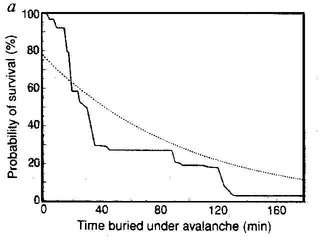First avalanche fatality of the season results in the tragic death of two acclaimed U.S. climbers/mountaineers
On October 7th, the U.S. recorded its first avalanche fatality of the season on Imp Peak in Gallatin National Forest near Bozeman, MT. Two well-known U.S. climbers, Hayden Kennedy, age 27, and Inge Perkins, age 23, were ascending the rugged backcountry peak with climbing skins on their skis when they unintentionally triggered an avalanche above them. This set a tragic course of events in motion that resulted in the deaths of both Kennedy and Perkins. Kennedy and Perkins had recently moved to Bozeman, MT and were very much in love with each other and the outdoors.

Inge Perkins, left, and Hayden Kennedy, right. Image courtesy of Daily Entertainment News
Perkins was fully buried in the avalanche while Kennedy was buried up to his chest and the back of his neck. Both were experienced in the backcountry and mountaineering and had taken an avalanche safety course. Kennedy was able to extricate himself from the snow, at which point he took out his avalanche beacon and set it to "search" in hopes of locating Perkins but couldn't find a signal. Later, it was found that Perkins' avalanche beacon was in her backpack, but turned off, rendering it useless for rescue purposes.

Location of the Imp Peak avalanche on October 7, 2017. Image courtesy of The Gallatin National Forest Avalanche Center
While the details are hazy, it seems that Kennedy searched for Perkins for approximately 3 hours using an avalanche probe and shovel but was unable to locate her.
While there are rare cases of people surviving avalanches after being fully buried for 22 hours or longer, time is of the essence in avalanche rescue. While the statistics vary among studies, according to avalanche.org, the odds of survival drop from approximately 92% after being buried for 15 minutes to 30% after 35 minutes, and then to less than 1% for those buried longer than 2 hours.
Survival depends on many factors, including whether the person who was buried has an air pocket near their face and the amount of trauma sustained before being buried. In the below graph, the first steep dropoff likely represents those who died of trauma or had no air pocket while the second dropoff represents those who had an air pocket and later died of asphyxia.

Odds of surviving an avalanche by the amount of time buried. Image courtesy of avalanche.org
Unable to find Perkins, Kennedy hiked out of the wilderness alone. He did not notify emergency services of the accident. Presumably distraught at the loss of his partner, Kennedy committed suicide the next day, but before doing so, left instructions for the recovery operation regarding where to find Perkins' body. On October 9th, her body was found under approximately 3 feet of snow by a team of rescuers who stated that the instructions left were very detailed and accurate.
Shortly before the accident, Kennedy had published an essay on http://eveningsends.com about the duality of climbing as a blessing and a curse and his grief over losing two former climbing partners in recent years.
Kennedy was a native of Carbondale, CO and was a well-known and loved member of the climbing community, better known as "HK" to many. His talent had not gone unnoticed and he had acquired corporate sponsorships. His father is also well-known for his mountaineering feats and was the editor-in-chief of Alpinist magazine for many years. However, Kennedy was not comfortable being in the limelight. He did not participate in social media or self-promotion in general. One of his more well-known and controversial accomplishments was the first "fair means" ascent of the Compressor Route on Cerro Torre, a remote and unforgiving peak in Patagonia. On his descent, he removed over 100 bolts that had been placed in the wall with a compressor-powered drill in 1970 by a climber determined to get to the top by any means necessary.

Cerro Torre's Compressor Route. Image courtesy of The Guardian
Perkins, a native of Bozeman, also had corporate sponsorships and a long list of athletic accomplishments, including winning the Montanta Bouldering Championships and the first outdoor deep-water-solo competition. Her love of the outdoors started with her family as a young child. She was working on her degree at Montana State University at the time of the accident and loved teaching and mathematics. Before signing a lease with Kennedy in Bozeman, she had no qualms about living out of her truck during the winter to be able to spend as much time outdoors as possible.
The loss of Perkins and Kennedy is a particularly devastating and tragic blow to the climbing community. They were loved by their friends and family and will be deeply missed.
@cmtzco has voted on behalf of @minnowpond. If you would like to recieve upvotes from minnowponds team on all your posts, simply FOLLOW @minnowpond.
To receive an upvote send 0.25 SBD to @minnowpond with your posts url as the memo
To receive an reSteem send 0.75 SBD to @minnowpond with your posts url as the memo
To receive an upvote and a reSteem send 1.00SBD to @minnowpond with your posts url as the memo
!originalworks
The @OriginalWorks bot has determined this post by @sc0ut to be original material and upvoted it!
To call @OriginalWorks, simply reply to any post with @originalworks or !originalworks in your message!
For more information, Click Here!
Special thanks to @reggaemuffin for being a supporter! Vote him as a witness to help make Steemit a better place!